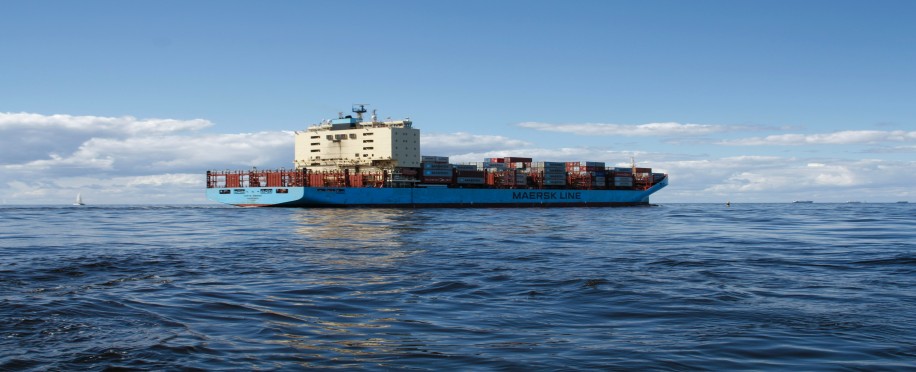Copyright © 2025 lmitac.com All Rights Reserved. Contact - Terms and Conditions - Privacy Policy - Quality Policy - Become an instructor - Vacancies - Sitemap
London Maritime Academy is a trade name for London Premier Groupversion: 2.9.0
London Maritime Academy is a trade name for London Premier Group

Posted on : 10/27/2025, 8:59:33 PM
With more efforts to protect the marine environment from all the activities in the maritime industry, the European United established a strong European Union Emissions Trading System (EU ETS).
The main goal of the EU Emissions Trading System (EU ETS) is to encourage maritime companies to invest in eco-friendly systems and sectors, especially in producing power, to protect the EU climate effectively from greenhouse gas and carbon dioxide gas.
Continue reading our article to learn about the EU Emissions Trading System (EU ETS), how it works in Europe and the UK, and the most important benefits of following the European Union Emissions Trading System (EU ETS).
The EU ETS stands for European Union Emissions Trading System, and when talking about EU ETS in shipping, then we are referring to the European trading system where shipping companies have to pay for the generation of greenhouse gas (GHG) while shipping in Europe.
Moreover, the European policy of the European Union Emissions Trading System (EU ETS) aims to set a strict and clear directive or limit, commonly known as a cap, on total greenhouse gas and carbon dioxide gas emissions for all activities in the maritime market within the EU's countries.
However, maritime companies that buy EU ETS permits, but then achieve lower emissions levels in the covered EU's areas compared to the requested reduction level, are allowed legally by the European Union Emissions Trading System (EU ETS) to sell these emissions permits with commission based on the sector proposals. From here, you can see the key concept of the trading system in the EU's emissions trading system.
So, all and any international ship or vessel shipping within the EU have to track and report their greenhouse gas and carbon emissions and buy emissions permits based on that. This European Union Emissions Trading System (EU ETS) is actually effectively redirecting maritime businesses to explore advanced electricity installations and improve energy efficiency, which is helping to protect the climate from greenhouse gases and carbon dioxide.
Now, many companies are investing in the trading system, the EU Emissions Trading System (EU ETS), just like they follow other IMO policies, including the Collision Regulations, Carbon Intensity Indicator (CII), and Energy Efficiency Design Index (EEDI).

EU ETS is a cornerstone in the union's climate protection and emissions control strategy, and we can say that the UK ETS is some kind of revision of the EU ETS and its setting to protect the climate from any manufacturing or shipping impact.
The UK ETS started in 2021, after the UK left the European Union and stopped taking part in the EU ETS, which has been running since 2005, and the shipping sector phase was included in 2024.
Nevertheless, both systems work in a similar trading concept to reduce greenhouse gas and carbon emissions by establishing a price on the transport emission, but the UK ETS has different sets of pricing rules and targets in managing its own emissions trading system to achieve the country’s climate goals.
Based on the professional maritime law training in London, the EU Emissions Trading System (EU ETS) applies all the needed rules and knowledge to protect the EU's climate from different greenhouse gas emissions.
Thus, taking professional law and insurance courses with the London Maritime Academy (LMA) is necessary in London or any other regional office in Dubai, Rotterdam, Hamburg, Istanbul, or Athens.
The European Union Emissions Trading System (EU ETS) for shipping aims to protect the environment and fight climate change by encouraging maritime companies to cut their carbon emissions and use greener energy sources in all maritime sectors.
The whole concept of the European Union Emissions Trading System (EU ETS) is not only encouraging ships and vessels to use greener energy and fuels to reduce emissions but also boosting total development with eco-friendly and energy-saving technologies, leading to greener and more efficient working ships on the sea.
Although maritime companies have to buy EU Emission Trading System (EU ETS) permits at first, but when these companies achieve a lower emission rate based on the EU's scheme, they can trade the bought permits, with commission. Creating a kind of trade-revised benefit source for climate protection and emission-reducing actions they are following.
Alongside the many other benefits to climate protection, maritime companies are now considering the money invested in renewable energy and climate protection techniques as a more cost-effective way than buying intensive EU ETS permits. That is why the green funding principle is getting bigger and bigger in the maritime industry.
We can say that this is the most important benefit from the European Union Emissions Trading System (EU ETS), as this emissions system is effectively helping in understanding and reaching the ultimate EU's target of being climate-neutral by 2050.
The European Union Emissions Trading System (EU ETS) is a great and green trading system to follow in many sectors, especially the maritime and shipping industry.
However, being able to follow and apply its regulations means you need to learn all about maritime laws and insurance systems with professional training, accredited certifications, and expert tutors.